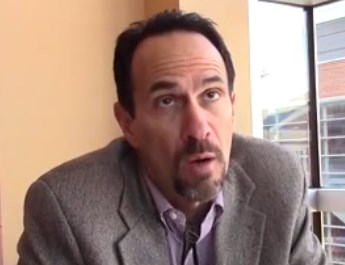User login
VIDEO: Treating opioid addiction in emerging adults
BALTIMORE – The treatment of opioid addiction in adults aged 18-25 years is fraught with challenging issues for clinicians, Dr. Marc J. Fishman said the annual conference of the American Society of Addiction Medicine.
“It’s very hard to reach them. They don’t necessarily want to be in ‘lame group or in rehab.’ They want to be out doing their thing, and so how can we be more engaging is part of the question,” said Dr. Fishman of the department of psychiatry and behavioral sciences at Johns Hopkins University in Baltimore.
In general, the standard of care for young adults with opioid addiction should include integrating relapse-prevention medications such as buprenorphine, extended-release naltrexone, “and perhaps to a lesser extent, methadone – the same tools we use for adults,” he said in a video interview. “But these tools should be adapted in a “developmentally specific, youth-friendly sort of way.”
He also discussed what parents and other caring adults can do to help young adult patients stick with treatment. “Full abstinence, full recovery is the gold standard, but it won’t happen overnight,” he said. “The good news: Young adults do respond to treatment.”
Dr. Fishman did not report any relevant financial disclosures.
The video associated with this article is no longer available on this site. Please view all of our videos on the MDedge YouTube channel
BALTIMORE – The treatment of opioid addiction in adults aged 18-25 years is fraught with challenging issues for clinicians, Dr. Marc J. Fishman said the annual conference of the American Society of Addiction Medicine.
“It’s very hard to reach them. They don’t necessarily want to be in ‘lame group or in rehab.’ They want to be out doing their thing, and so how can we be more engaging is part of the question,” said Dr. Fishman of the department of psychiatry and behavioral sciences at Johns Hopkins University in Baltimore.
In general, the standard of care for young adults with opioid addiction should include integrating relapse-prevention medications such as buprenorphine, extended-release naltrexone, “and perhaps to a lesser extent, methadone – the same tools we use for adults,” he said in a video interview. “But these tools should be adapted in a “developmentally specific, youth-friendly sort of way.”
He also discussed what parents and other caring adults can do to help young adult patients stick with treatment. “Full abstinence, full recovery is the gold standard, but it won’t happen overnight,” he said. “The good news: Young adults do respond to treatment.”
Dr. Fishman did not report any relevant financial disclosures.
The video associated with this article is no longer available on this site. Please view all of our videos on the MDedge YouTube channel
BALTIMORE – The treatment of opioid addiction in adults aged 18-25 years is fraught with challenging issues for clinicians, Dr. Marc J. Fishman said the annual conference of the American Society of Addiction Medicine.
“It’s very hard to reach them. They don’t necessarily want to be in ‘lame group or in rehab.’ They want to be out doing their thing, and so how can we be more engaging is part of the question,” said Dr. Fishman of the department of psychiatry and behavioral sciences at Johns Hopkins University in Baltimore.
In general, the standard of care for young adults with opioid addiction should include integrating relapse-prevention medications such as buprenorphine, extended-release naltrexone, “and perhaps to a lesser extent, methadone – the same tools we use for adults,” he said in a video interview. “But these tools should be adapted in a “developmentally specific, youth-friendly sort of way.”
He also discussed what parents and other caring adults can do to help young adult patients stick with treatment. “Full abstinence, full recovery is the gold standard, but it won’t happen overnight,” he said. “The good news: Young adults do respond to treatment.”
Dr. Fishman did not report any relevant financial disclosures.
The video associated with this article is no longer available on this site. Please view all of our videos on the MDedge YouTube channel
EXPERT ANALYSIS FROM THE ASAM ANNUAL CONFERENCE
